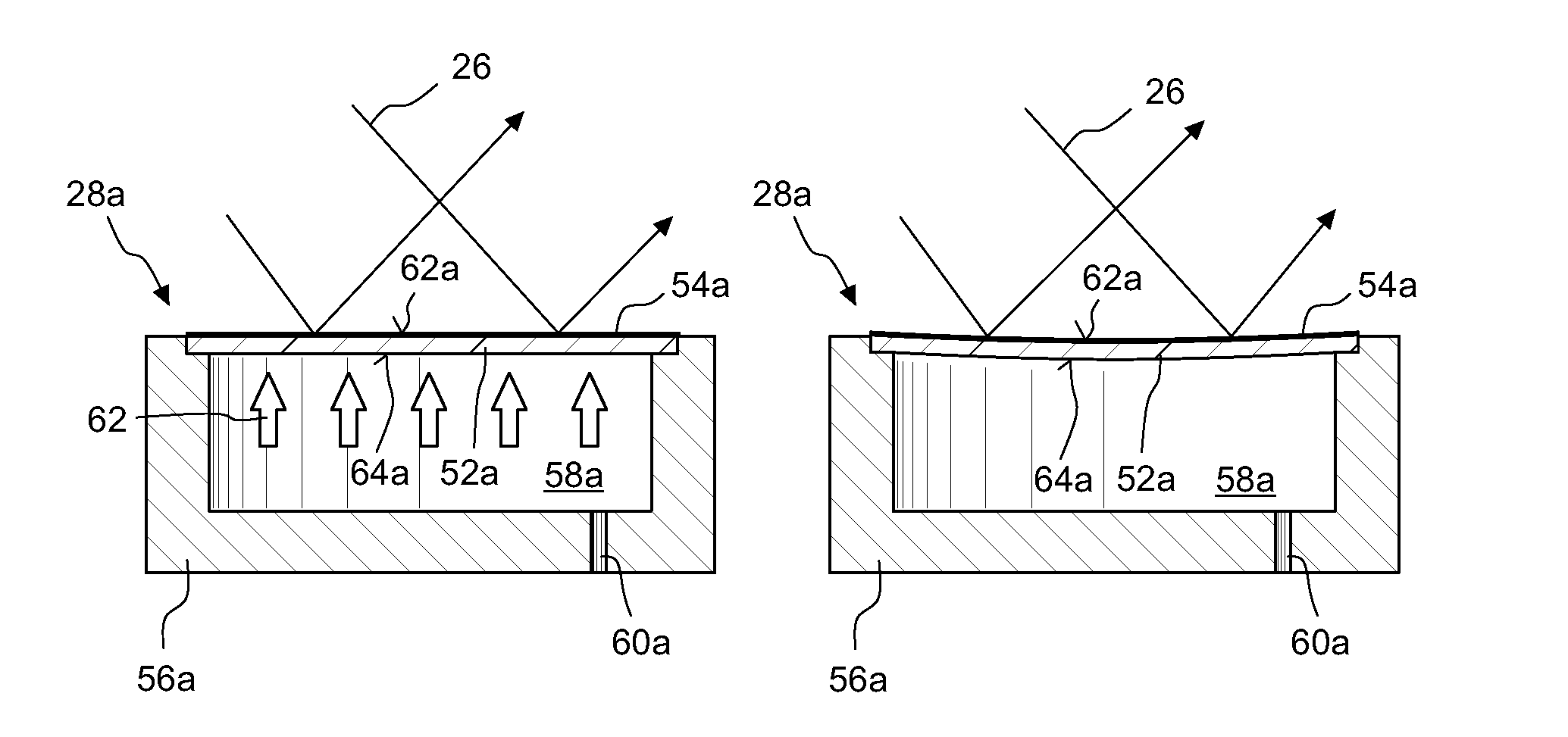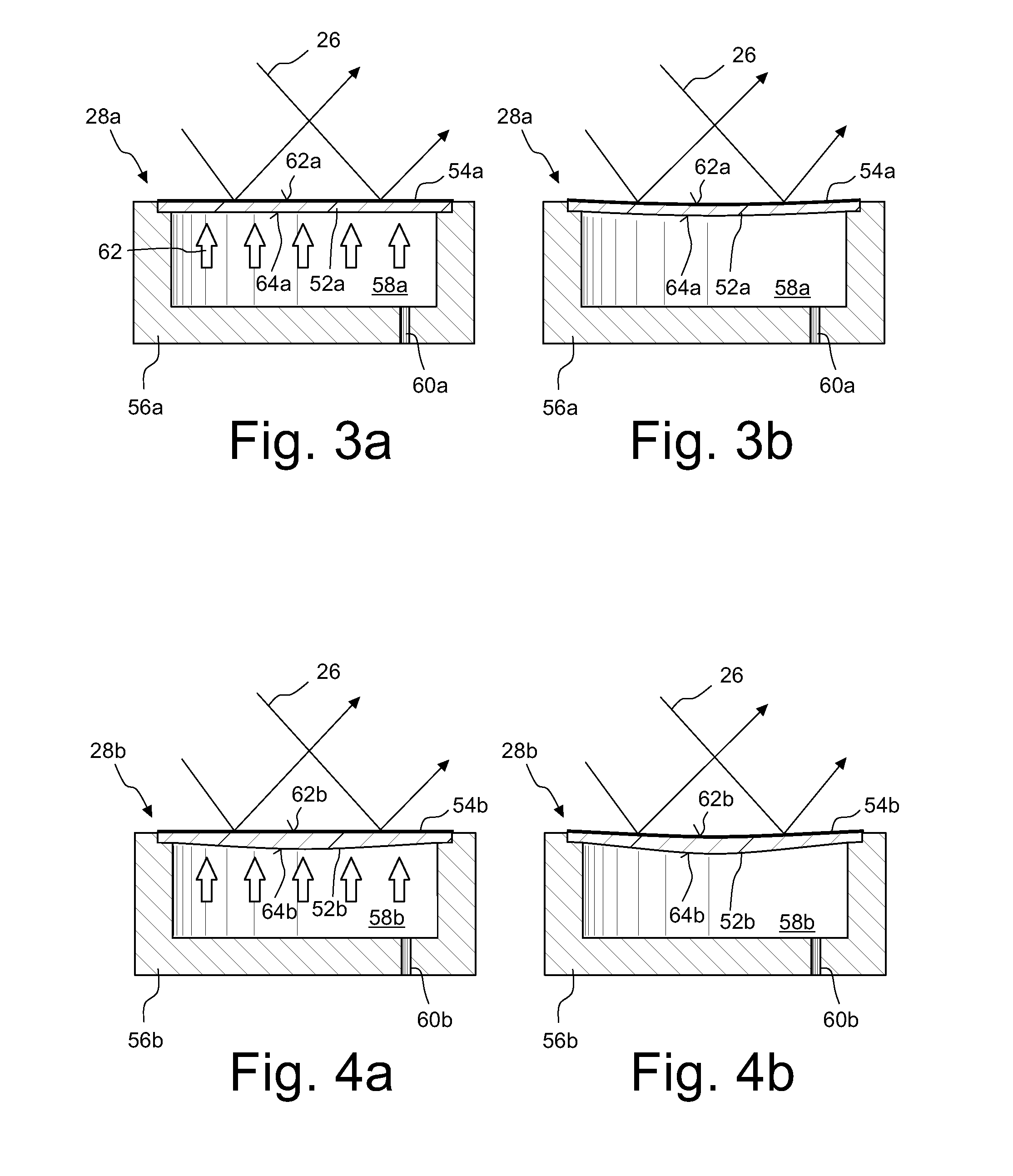Adaptive Mirror for a Laser Processing Device
a laser processing device and mirror technology, applied in laser beam welding apparatus, instruments, optics, etc., can solve the problems of piezoelectric elements deformation of adaptive mirrors, workpieces cannot be processed in the desired manner, and elements heat up, and achieve the effect of simple construction
- Summary
- Abstract
- Description
- Claims
- Application Information
AI Technical Summary
Benefits of technology
Problems solved by technology
Method used
Image
Examples
Embodiment Construction
[0042]FIG. 1 shows a side view of a laser processing apparatus 10 having a robot 12 and a processing head 14 which is fastened to a movable arm 16 of the robot 12.
[0043]The laser processing apparatus 10 additionally includes a laser radiation source 18, which in the exemplary embodiment shown is in the form of an Nd:YAG laser or CO2 laser. Other lasers and other arrangements of the laser radiation source 18 relative to the robot 12 are of course likewise possible. The laser radiation generated by the laser radiation source 18 is guided via a laser guidance system 20 to the processing head 14 and from there is focused in a focal spot 22. The arm 16 of the robot 12 is positioned with respect to a workpiece 24 in such a manner that the focal spot 22 is situated at the desired location on the workpiece 24 and the workpiece 24 can be processed by welding, separating or in another manner.
1. Beam Guidance System
[0044]FIG. 2 shows schematically the beam path of the laser radiation as well a...
PUM
| Property | Measurement | Unit |
|---|---|---|
| diameter | aaaaa | aaaaa |
| angle | aaaaa | aaaaa |
| stiffness | aaaaa | aaaaa |
Abstract
Description
Claims
Application Information
 Login to View More
Login to View More - R&D
- Intellectual Property
- Life Sciences
- Materials
- Tech Scout
- Unparalleled Data Quality
- Higher Quality Content
- 60% Fewer Hallucinations
Browse by: Latest US Patents, China's latest patents, Technical Efficacy Thesaurus, Application Domain, Technology Topic, Popular Technical Reports.
© 2025 PatSnap. All rights reserved.Legal|Privacy policy|Modern Slavery Act Transparency Statement|Sitemap|About US| Contact US: help@patsnap.com



